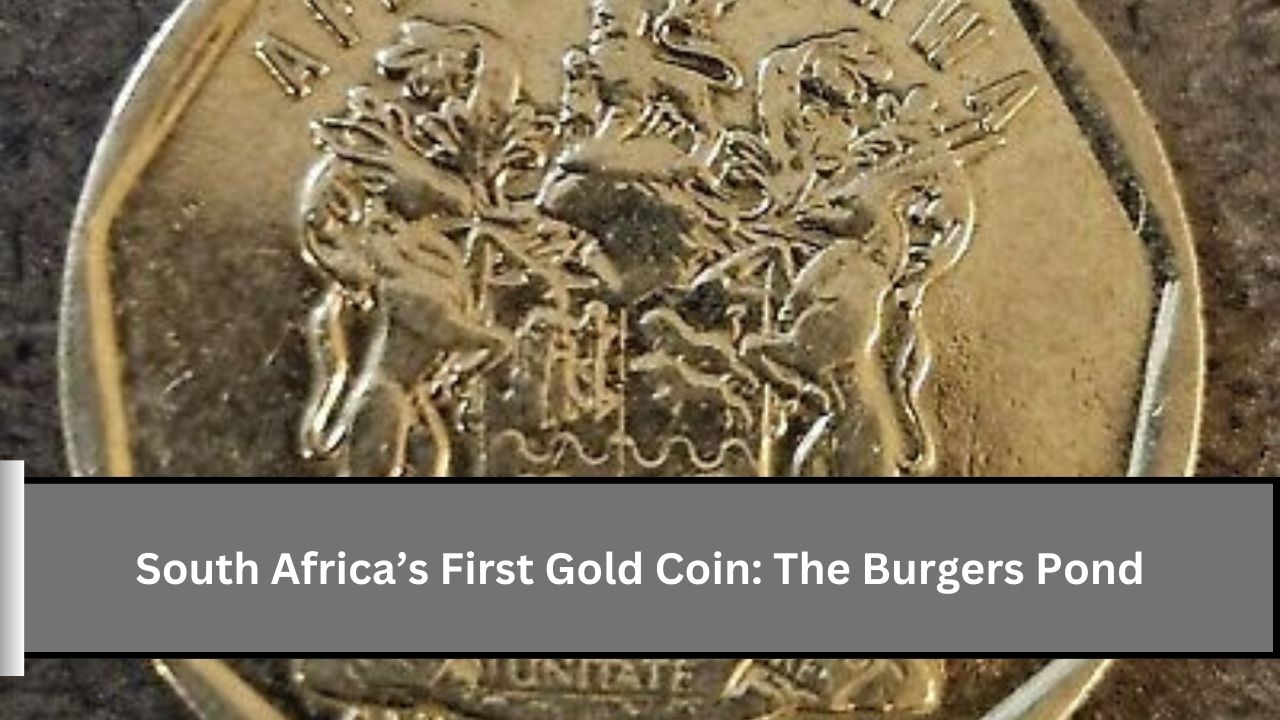In the history of South Africa, one of the most interesting stories is about the first gold coins minted in the country, known as the Burgers Pond. Before 1874, South Africa only used British currency. However, this changed when President Thomas François Burgers introduced a new form of currency. In this article, we will explore the background of the Burgers Pond, the man behind it, and its significance in South African history.
A Shift in Currency: The Need for Local Coins
Up until the mid-19th century, South Africa relied on British coins for trade and transactions. This was not ideal for many people living in the country. In 1874, two local currencies emerged to address this issue. One of these was trade tokens from a store called Strachan and Company in East Griqualand. These tokens quickly became popular along South Africa’s east coast and were used as a form of currency for over fifty years.
Key Facts About the Burgers Pond
| Feature | Details |
|---|---|
| Year Minted | 1874 |
| Total Coins Minted | 837 |
| Types of Coins | Fine Beard, Coarse Beard |
| Weight of Gold Used | 300 ounces |
| Designer | Thomas François Burgers |
| Mint Location | Heaton’s Mint, Birmingham, England |
| Significance | First gold coins minted in South Africa |
| Circulation Status | Never circulated; kept as keepsakes |
Timeline of Events Related to the Burgers Pond
| Year | Event |
|---|---|
| 1853 | Petition for indigenous coinage begins in South Africa. |
| 1872 | Thomas François Burgers elected as president. |
| 1874 | Burgers purchases gold and commissions the minting of coins. |
| July 1874 | First batch of 695 coins minted (Fine Beard variety). |
| Sept 1874 | Second batch of 142 coins minted (Coarse Beard variety). |
| 1875 | Coins presented to Volksraad but criticized; no further coins minted. |
Who Was Thomas François Burgers?
Thomas François Burgers served as the fourth president of the South African Republic from 1872 to 1877. He was a well-educated man who studied theology in the Netherlands. Upon returning to South Africa, he worked as a priest. However, his liberal views clashed with the Dutch Reformed Church, leading to his suspension in 1864. Despite this setback, he was well-liked by the people and was elected president in 1872 by a significant margin.
The Birth of the Burgers Pond
Burgers is primarily remembered for minting South Africa’s first gold coins. The idea for local coinage began as early as 1853, with many people requesting it. In 1874, Burgers took a significant step by purchasing 300 ounces of gold. He sent this gold to J.J. Pratt, the Republic’s Consul-General in London, asking for coins that were the same size as the British pound. He also included a portrait of himself and a sketch of the republic’s coat of arms for the design.
Pratt then commissioned Heaton’s Mint in Birmingham to create the coins. The first batch of 695 coins was produced in July 1874, known as the “fine beard” variety. A second batch of 142 coins was minted in September of the same year, called the “coarse beard” variety. The difference between these two types was due to the original die breaking, requiring a new one that made the president’s beard appear thicker and coarser.
Controversy Surrounding the Coins
When Burgers presented the coins to the Volksraad, the parliament of the South African Republic, they were not pleased. Many members criticized him for using public funds to produce coins with his own image, viewing it as a sign of vanity and egotism. Due to this backlash, no further coins were minted, and the Burgers Pond never entered general circulation. Instead, these rare coins were kept as keepsakes by members of the Volksraad, with some even turned into jewelry or ornaments.
Legacy of the Burgers Pond
Despite the initial controversy, the Burgers Pond remains an important piece of South African history. It symbolizes a shift towards local currency and reflects the complex political landscape of the time. Today, these coins are highly sought after by collectors and hold great historical value. The Burgers Pond serves as a reminder of President Burgers’ efforts to establish a unique South African identity and currency.
In conclusion, the Burgers Pond represents more than just a gold coin; it signifies the struggle for independence and self-identity in South Africa. The story of Thomas François Burgers and his failed attempt to introduce these coins shows how public perception can shape historical events. Even though the Burgers Pond never circulated, its legacy endures as a significant milestone in South Africa’s monetary history.
Conclusion
The story of the Burgers Pond is a fascinating chapter in South African history. Minted under President Thomas François Burgers in 1874, these coins were meant to symbolize a new era of local currency. However, their introduction sparked controversy, leading to their non-circulation. Despite never being used as actual money, the Burgers Pond has become a significant historical artifact, reflecting the desire for a unique South African identity. Today, these rare coins are cherished by collectors, representing not only the monetary aspirations of the time but also the complex dynamics of politics and public perception. The legacy of the Burgers Pond reminds us that currency can carry deeper meanings beyond its economic value, serving as a symbol of a nation’s journey toward self-determination and recognition.
FAQ’s
What is the Burgers Pond?
The Burgers Pond is South Africa’s first gold coin, minted in 1874 under President Thomas François Burgers.
Why were the Burgers Pond coins never circulated?
The coins were criticized for featuring the president’s image, leading to public backlash, and they were never put into circulation.
How many Burgers Pond coins were minted?
A total of 837 coins were minted, with 695 being the “fine beard” variety and 142 being the “coarse beard” variety.
Who was Thomas François Burgers?
Thomas François Burgers was the fourth president of the South African Republic, serving from 1872 to 1877, known for his efforts to introduce local currency.
What happened to the Burgers Pond coins after they were minted?
The coins were kept as keepsakes by members of the Volksraad and were often turned into jewelry or ornaments, making them rare collectibles today.

